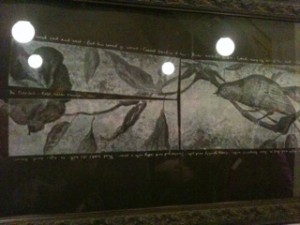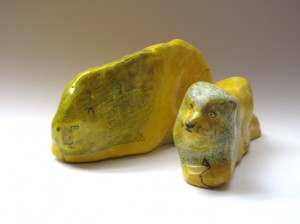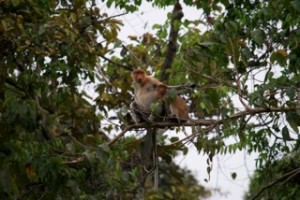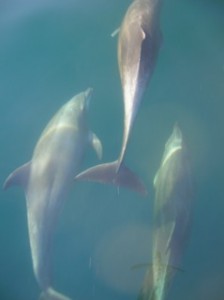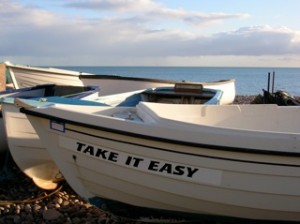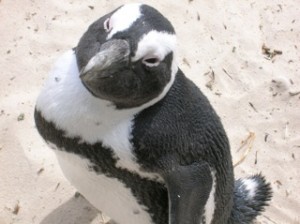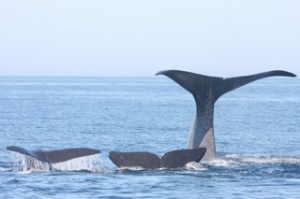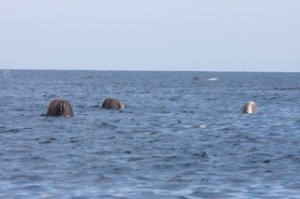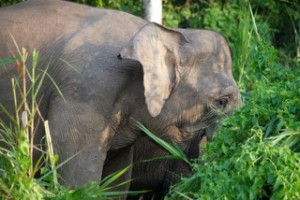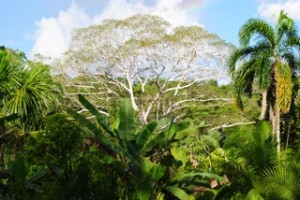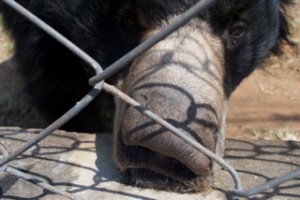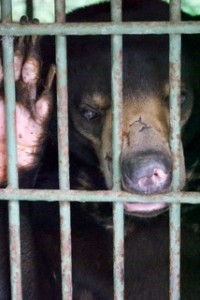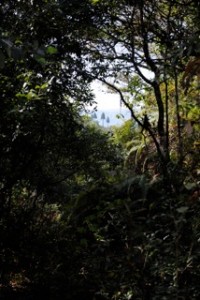 How many books did you read, or have read to you, as a child that featured lions or elephants? How many have you read to your own kids or grandkids? I would guess that for most children growing up with English as their first, or even second language, ‘lu’ is for Lion and ‘e’ is for elephant. From what I’ve seen of children’s books from other countries even when they don’t feature in the alphabet, lions and elephants loom large in the imaginative landscape of the under tens in most parts of the world. And they stay there, lumbering and lurking in our psyche, appearing in our dreams, the symbol of all manner of subconscious tides and seasons; they are the embodiment of ‘The Wild’, always there beyond the circle of the campfire of our civilized lives, enclosing and defining our little world, just as night defines day.
How many books did you read, or have read to you, as a child that featured lions or elephants? How many have you read to your own kids or grandkids? I would guess that for most children growing up with English as their first, or even second language, ‘lu’ is for Lion and ‘e’ is for elephant. From what I’ve seen of children’s books from other countries even when they don’t feature in the alphabet, lions and elephants loom large in the imaginative landscape of the under tens in most parts of the world. And they stay there, lumbering and lurking in our psyche, appearing in our dreams, the symbol of all manner of subconscious tides and seasons; they are the embodiment of ‘The Wild’, always there beyond the circle of the campfire of our civilized lives, enclosing and defining our little world, just as night defines day.
But what if that’s the only place where lions and elephants were? If they no longer existed outside a zoo or the pages of a picture book? Think about that. Really think about it. If there are no more wild lions and wild elephants, then nature no longer encircles us, there is no longer a Big Wild, only little patches of wild that fit in between all the things that we humans do. That’s what we are in danger of. When I began my career in zoology 30 years ago there were 200,000 lions in Africa. Now there are 15,000. And the numbers of Asian elephants across the whole of their range -India, Sri Lanka, Thailand, Borneo? Just 50,000, twenty thousand fewer than the human population of Barnsley.
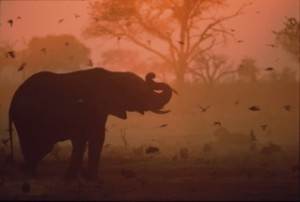 For me, the knowledge that there are places where human stuff just runs out and there is only nature, huge uncontrollable swathes of it, with animals in, is incredibly important, fundamental actually. And I’m pretty sure that if you dug around in any human mind you’d find something similar – the need for nature to be the biggest thing there is, and for that to be manifest in the continued existence of wild places and big wild animals.
For me, the knowledge that there are places where human stuff just runs out and there is only nature, huge uncontrollable swathes of it, with animals in, is incredibly important, fundamental actually. And I’m pretty sure that if you dug around in any human mind you’d find something similar – the need for nature to be the biggest thing there is, and for that to be manifest in the continued existence of wild places and big wild animals.
Now I know there are lots of people who claim that Big Wild is a luxury. That for people in poorer countries – where most of the Big Wild is – having a reasonable chance that your kids won’t die at two from diarrhoea, is more important. Of course, when you are fighting for immediate survival, you don’t see or even feel the bigger picture – families dying of cholera in the back streets of industrial revolution Manchester didn’t think about fell walking, but when conditions were just a little better The Wild became important: as Ewan McColl wrote:
I’m a rambler, I’m a rambler from Manchester way
I get all my pleasures the hard moorland way
I may be a wage slave on Monday
But I am a free man on Sunday
The truth is that it isn’t a simple choice between Big Wild and a decent standard of living, not just one or the other. It’s the choice that big business has often liked to present in order to get approval for huge schemes that destroy habitats and benefit a few people a very long way away. Attaining a decent standard of living can go hand in hand with keeping Big Wild and may even be dependent on it. On the big, planetary ecosystem scale that’s obviously true, as without the wild, natural functioning of oceans, forests and soils we wouldn’t have breathable air, drinkable water and edible food. But on the smaller species by species, habitat by habitat scale- on the elephant and lion scale – it’s true too.
There are lots of very good practical arguments for maintaining viable wild populations of ‘charismatic megafauna’ (- as the big, mostly furry, creatures are called that management-speak style of conservation). One of the biggest as far as lions are concerned – in all parts of their remaining range – is income from tourism. Wildlife geeks like me would go to Africa for the bat eared foxes but the majority of tourists won’t use their passports or open their wallets for the smaller details of biodiversity. Big famous animals that belong to the Universal Set of creatures that turn up in picture books across the world, bring money to countries where it’s really needed, helping to give people a decent standard of living whilst keeping their encircling wilderness. A single male lion brings $500,000 worth of tourist money into its country in its lifetime, and Kenya’s 2000 lions bring 30 million dollars into the country every year.
The success of tourism as an engine of sustainable development depends on two things. First that the income from it reaches the right people, the locals who have to live with the ‘Charismatic Mega Fauna’ when the tourists go home. And second that the cost of living with the CMF isn’t too high. When the CMF your talking about are lions and elephants, finding a way to keep the costs down is tricky: lions are predators that can and do take humans as dinner and elephants can march through crops and houses as efficiently as an HGV.
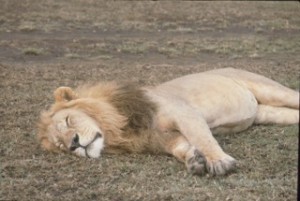 Sometimes this is just about changing the way people do things. The Niassa Carnivore Project in Mozambique found that lion attacks could be prevented by asking people to follow a few simple rules, like never sleeping in the open and always carrying a torch at night. They spread the word about this by using posters that even people who couldn’t read would understand.
Sometimes this is just about changing the way people do things. The Niassa Carnivore Project in Mozambique found that lion attacks could be prevented by asking people to follow a few simple rules, like never sleeping in the open and always carrying a torch at night. They spread the word about this by using posters that even people who couldn’t read would understand.
Good strong fences really help too. Fences around villages and crops keep lions’ wild prey out, so that they have no reason to wander in after it and come face to face with a human. Putting domestic animals inside a barn or behind a fence at night stops valuable cattle, sheep and goats – which can be a family’s lifeline – ending up as a lion’s dinner.
Knowing exactly where lions are can keep people and their animals from getting into danger. Putting satellite or radio tags on lions means they can be tracked over long distances, and if they get close to villages or grazing cattle, people can be warned. The Living With Lions project in Kenya employs local Maasai warriors – who once hunted lions – as Lion Guardians. Lion Guardians are trained to use tracking equipment and given mobiles phones to spread information about what lions are up to.
Helping people to live safely with lions means they are less likely to want to kill them and more likely to see that lions can be useful, keeping down the numbers of crop munching animals like bush pigs, and bringing income from tourism.
Keeping CMF also means keeping the habitat that supports it and that in itself may directly benefit the humans that share the habitat. In the Garo Hills communities have resisted the temptation of short term benefits of cutting down forest and set up reserves to safeguard existing forests and planted trees to restore patches previously cleared. This way communities still get all that the forest provides for free: building materials, foods, medicines, clean water, a sense of identity and social coherence. And they keep their CMF in this case a healthy population of elephants that can move between two vast areas of national park via the mosaic of forest reserves created and maintained by the Garo people.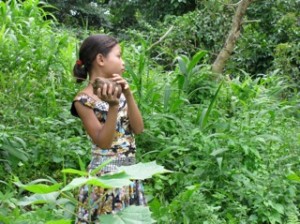
With the means to create a decent standard of living for their families and communities, the people I communicated with and visited, whilst researching ‘The Lion Who Stole My Arm’ and ‘Elephant Road’ , the two books published on 13th March by Walker, choose to keep the their Big Wild. And the final part of this jigsaw is that they are helped to do it by conservation organisations whose funding comes from those of us with elephants and lions in our heads, trundling about in the big encircling wild of our subconcious.
